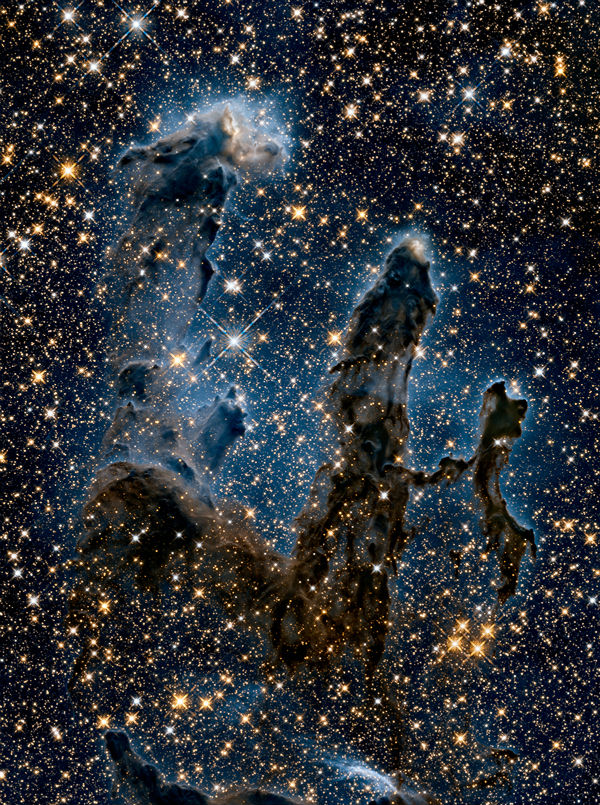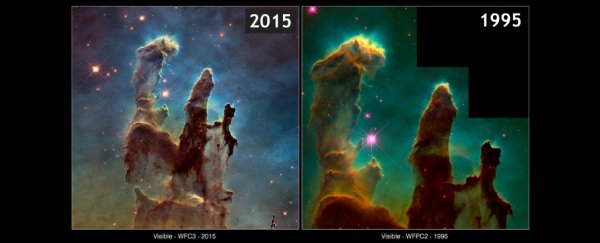Two decades after the Hubble space telescope released an awe-inspiring image of the Eagle nebula's 'Pillars of Creation', it's now captured an even more stunning image of this magnificent gas giant.
Click here for a bigger, high-res version.
As part of Hubble's 25th birthday celebrations, astronomers at NASA and the European Space Agency (ESA) are releasing updated versions of some iconic images taken by the over-achieveing space telescope. Yesterday we got to dive into the 1.5 billion pixels of its new image of the Andromeda galaxy - you'd need more than 600 HD television screens to display the whole thing, but luckily, we have a neat zoom tool to view it with instead. And now we get to see the Pillars of Creation as they've never been seen before.
The original image was taken in 1995 using Hubble's Wide Field and Planetary Camera 2, and gave astronomers - and space enthusiasts everywhere - a glimpse into how new stars are formed in a cloud of dust and gas. According to astronomer Paul Scowen at Arizona State University in the US, who was part of the team that helped capture the original image, these elongated 'elephant trunks' are not uncommon in star-forming regions, but they look extra-amazing in this particular nebula. "We coloured it that way not because it was pretty, but because it told you something about the physics," Scowen told Lisa Grossman at New Scientist, "although it was pretty."
Scowen and his team have since gotten access to Hubble's new Wide Field Camera 3, which was installed in 2009. With twice the resolution of the original camera, it can now take sharper, and wider images that ever before.
Also known as Messier 16, the Eagle Nebula is located just 6,500 light-years away from Earth. What we can see, 20 years on, is that the trio of 5-light-year-tall elephant trunks are slowly detaching from their wispy base - the entire gassy structure is coming apart at the seams. "I'm impressed by how transitory these structures are," Scowen said at the American Astronomical Society meeting in the US earlier this week. "They are actively being ablated away before our very eyes."
The Hubble team also captured an image of the pillars at infrared wavelengths, which not only looks super-sparkly, but it can be used to see infant stars sitting among the gas and dust, says New Scientist, which can give astronomers a good idea about the nebula's star-forming abilities.
Head to the Hubble website to get access to the highest-resolution versions of these images.
 Credit: NASA, ESA/Hubble and the Hubble Heritage Team
Credit: NASA, ESA/Hubble and the Hubble Heritage Team
Sources: New Scientist, Hubble
